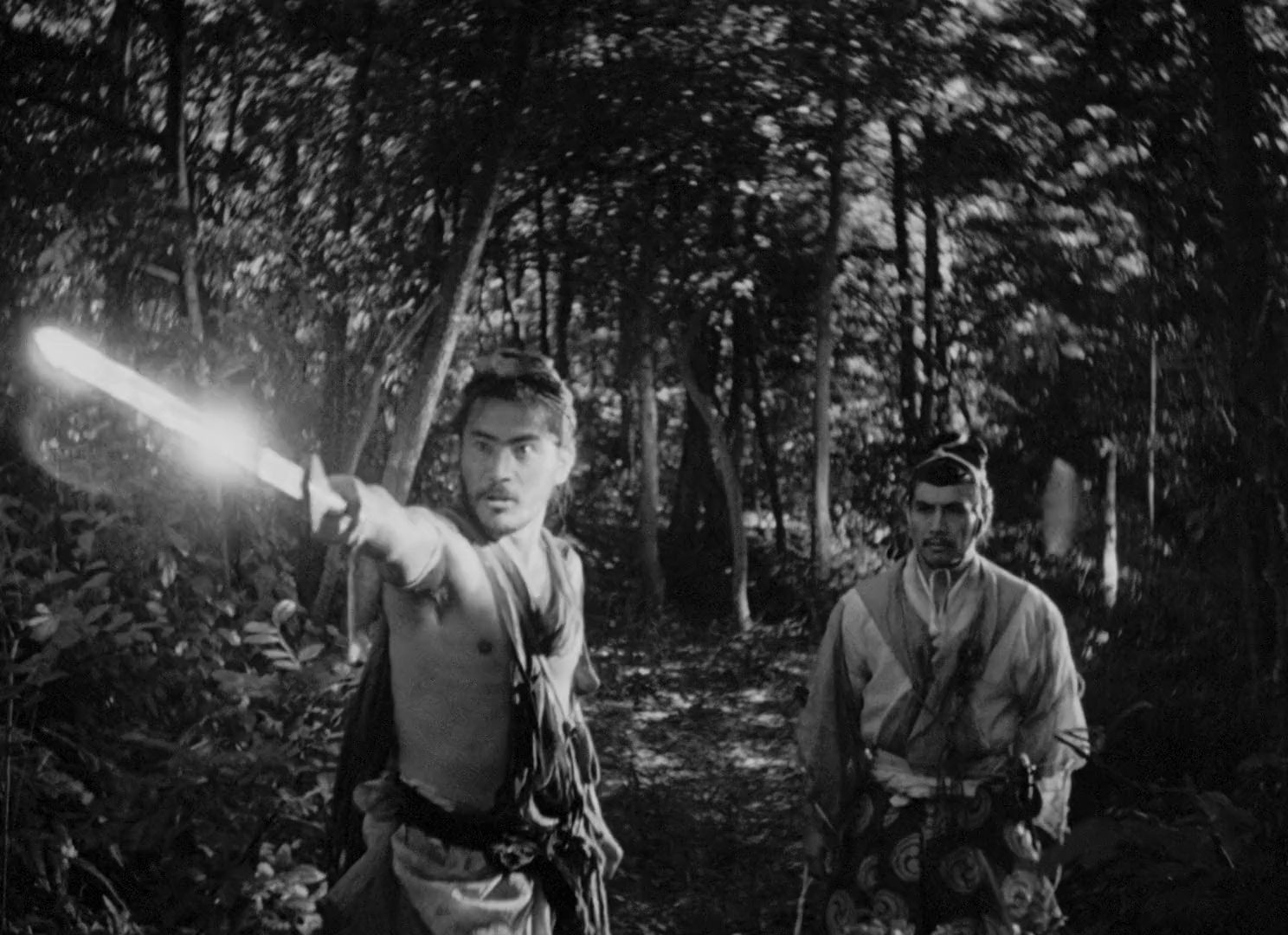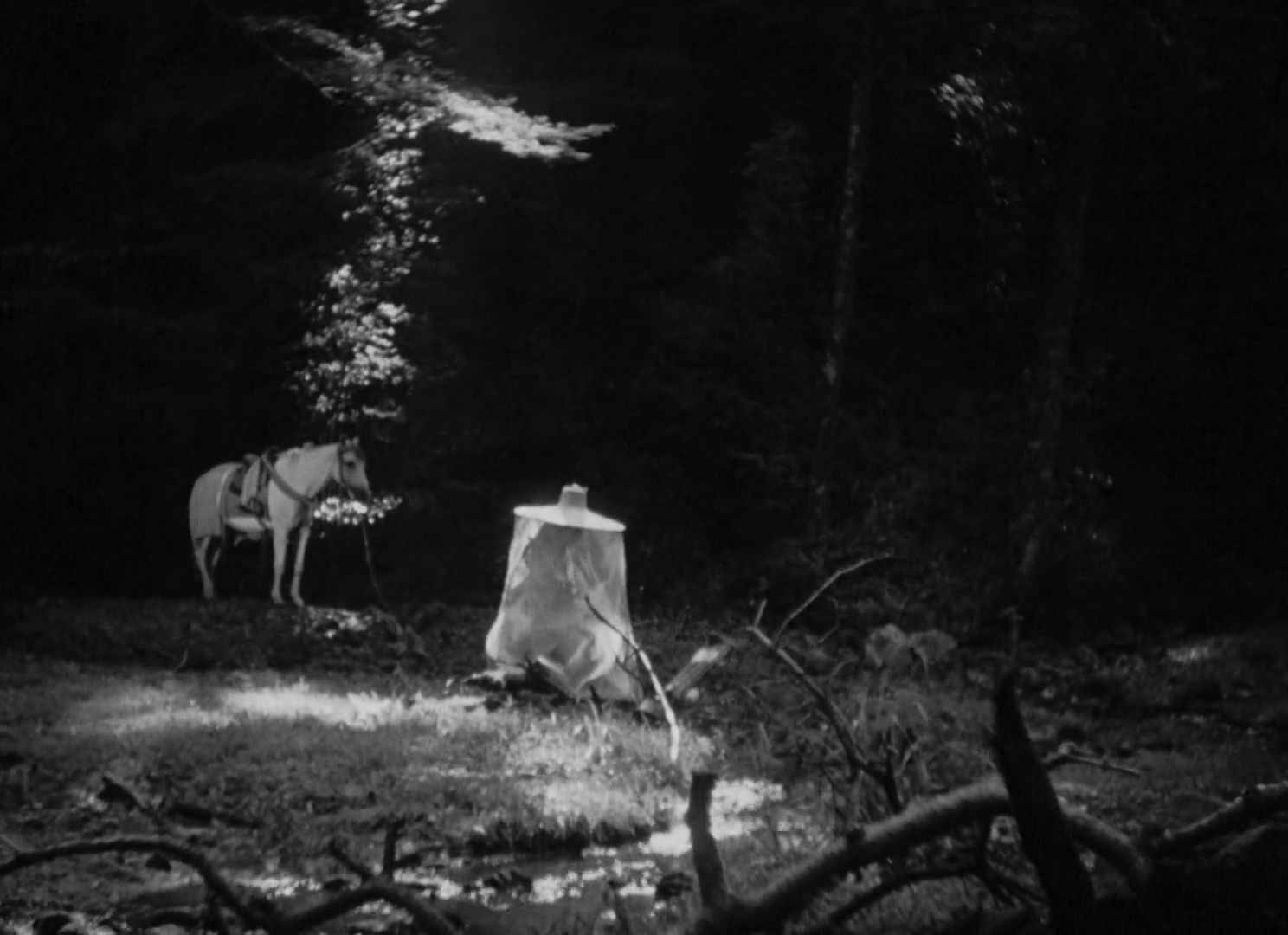Alternate Rashomon analysis
-
14 March 2019
14 March 2019
That’s an incredibly interesting take – and there’s enough there that it can’t be disregarded. Coincidences don’t happen like this, especially in Kurosawa. This probably was intentional, and smart writing that the subject of the case would relate somewhat to the setting. There’s definitely some layers there I had never thought of.
However, this isn’t exactly an interpretation of the entire film, just an extra piece of symbolism within the film (which is probably why you haven’t seen it online).
14 March 2019
That’s a really interesting take on the film, Rasho’mom’!
The building in the film is actually not a temple but a gate, and more specifically the Rajōmon gate that was built in kyoto in the late 8th century and fell into disrepair by the 12th. It’s generally suggested that its ruined state in the film reflects some sort of ruination of Japanese society, possibly as commentary on post-war Japan.
However, I quite like the idea of the gate also symbolising the womb, and you make an interesting case about the three characters in the frame story doubling for the three male characters in the story-within-the-story. This kind of also ties with an interpretation that I have been chasing for a while now, but haven’t really been able to properly formulate.
The first draft of the screenplay was written by Shinobu Hashimoto, who notes in his memoir that the original title was 雌雄 (Shiyu), a combination of the characters for female and male, basically meaning “Male and Female”. After he presented this to Kurosawa, the director took the draft and reshaped it, adding (based on Hashimoto’s suggestion) the Rashomon gate setting from another story by Ryūnosuke Akutagawa, on whose short stories the film is based.
For a couple of years now, I have been thinking about the title “Male and Female” and this Rashomonless Rashomon. I have never seen the original draft, and I don’t know if a copy exists any more, so I am operating on practically nothing, and what Hashimoto writes in his book. Yet, a sexual encounter in a grove, combined with the title “Male and Female”, does make one think about the Garden of Eden story found in Abrahamic mythology. In that story, through a woman’s misjudgement the world suddenly becomes a more complex place and depending a little on the interpretation, sex or sexuality tends to be emphasised either as the reason or an outcome of that. The event also curses women in regard to childbirth.
Rashomon / “Male Female”, after all, represents a highly complex world that defies simple logic, is built on a sexual act or assault, and there is also the “childbirth” at the end (added by Kurosawa and apparently disliked by Hashimoto).
There is also some potentially Christian imagery in the finished film, including the bandit’s cross-shaped and very un-Japanese sword:

As well as the enormous cross of light looming over the woman as she waits for her husband’s return.

Now, any Christian symbolism would be easier to argue as standing for the American Occupation, particularly as it seems to be associated with the dirty bandit. And yet, it also seems to resonate with the Eden myth, and perhaps by following that line of thought, also the womb imagery that you proposed for the gate. I quite like that idea.
16 March 2019
Thanks Rasho’mom, thats a really interesting idea, it had never occurred to me. I must re-read the two short stories that AK adapted for the film, from memory I think the notion of the ruined building as being a ‘womb’ might well have its origin there.
Leave a comment
Log in or to post a comment!






Rashomon – An alternate symbolism analysis
By Robin Raef (Rasho’mom’)
I recently saw “Rashomon”, by Akira Kurosawa, for the first time. This viewing was at the recommendation of my son, who is very interested in Akira Kurosawa films. The film has not left my mind since I saw it. I am no slacker when it comes to film. I studied film in high school and college and I have always had a high interest in the film arts.
While watching the film I thought out loud. I asked what the building was that they were in. My son said it was a temple. When he said, “Temple” the thought crossed my mind that the building could symbolize a “womb”. As the film progressed the “womb” symbol became very apparent to me.
First, the building that was damaged symbolized the “ruining” of the woman by being raped, in that period of time, in that culture.
There were two confused and distraught men taking shelter in the building. This symbolized the husband and thief each being with the woman and the resulting dilemma they faced after the rape. The woodcutter who witnessed the rape was represented by the commoner who later came to take wood from the building for his own needs.
If there was any doubt in my mind that the building was representative of a womb, it disappeared when the baby was found. We can assume that the woman was pregnant after the rape, however, the identity of the father would be in question.
The two men taking shelter in the building did not dwell on where the baby came from. They decided that the baby would be cared for by the woodcutter and they moved on with their lives with the knowledge they did the right thing for humanity.
After the film, I shared my view that the building represented a womb. I was promptly laughed at and it is now a running joke among my husband and son.
I looked at other essays and analysis and I have not found anyone else who has come to that conclusion. I can only assume this would be a new take on the symbolism of Rashomon.
I invite others to provide opinions as to the accuracy of my “womb theory”.